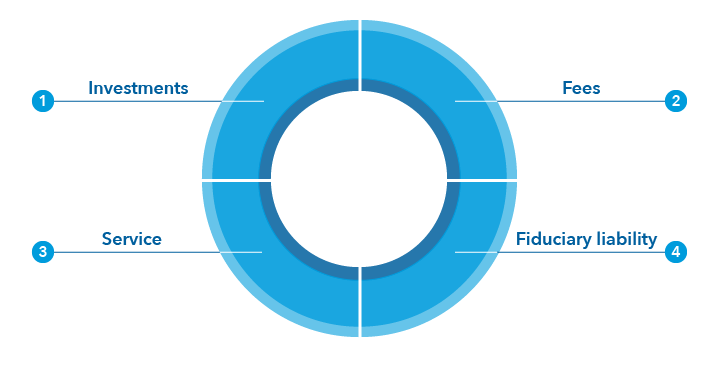Turn plan sponsors into takeover prospects
Winning a takeover plan can be one of the fastest ways to grow your business. To prompt plan sponsors to consider a change, try asking these simple questions and see how we can help you evaluate Form 5500 data.*
Four common reasons sponsors make plan changes

1. Ask investments question:
“Does your plan have a quality target date series that focuses on participant outcomes?”
Use our target date brochure to show sponsors the benefits of our series, including underlying funds and a distinctive glide path approach. You can also use Target Date ProView® to compare up to four series with Morningstar® data in a client-ready report aligned with DOL guidelines.
2. Ask fees question:
“Do you and your employees fully understand all of your plan fees?”
If the answer is no, we can help you benchmark plan fees with the Retirement Plan Cost Comparison Tool, which generates a report that can help sponsors see if the fees are reasonable and if a plan from Capital Group might have lower costs.
3. Ask service question:
“On a scale from 1 to 10, how would you rate the level of service that your plan receives?”
If anything but a 10, ask, “What would it take for a 10?” The answer may help you learn what’s most important to the sponsor. Review our employer-sponsored plans to learn about the features and services we can provide sponsors and participants, as well as you, the plan’s financial professional.
4. Ask fiduciary liability question:
“Are you concerned about your fiduciary liability as a plan sponsor?”
Plan sponsors who want help meeting their fiduciary obligations in selecting and monitoring investments may want to use an independent fiduciary service provider.
5. Identify prospects and analyze plans with Form 5500 data
You can use Form 5500 plan data (available at sites such as efast.dol.gov and BrightScope.com) both to identify prospects and to find out more about any you’ve found.
Learn about Leveraging Plan Data From Form 5500 or call your retirement plan counselor or (800) 421-9900 to have us utilize our expanded BrightScope access to interpret and analyze plan data for you. For example, we may be able to point out plan weaknesses that you can address, such as excessive fees, poor participation rates and inadequate investment menus.
Supporting products & solutions
Related literature
Establishing contact with prospective retirement plan clients
* Form 5500 is a compliance and disclosure document designed to help ensure that employee benefit plans are operated and managed according to ERISA standards. Qualified retirement plans are required to file a Form 5500 every year.